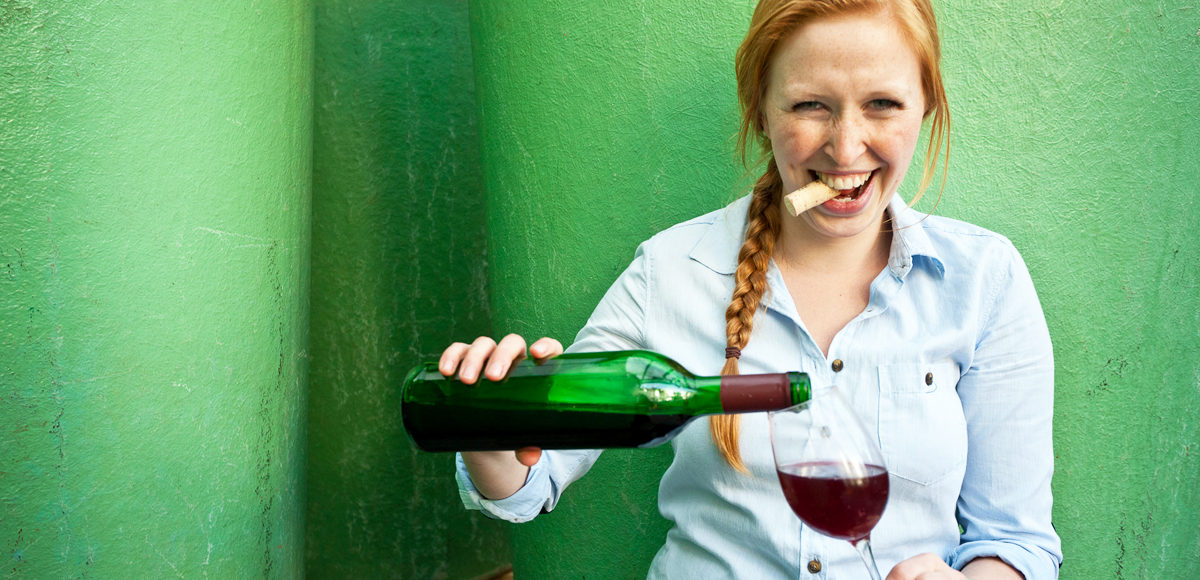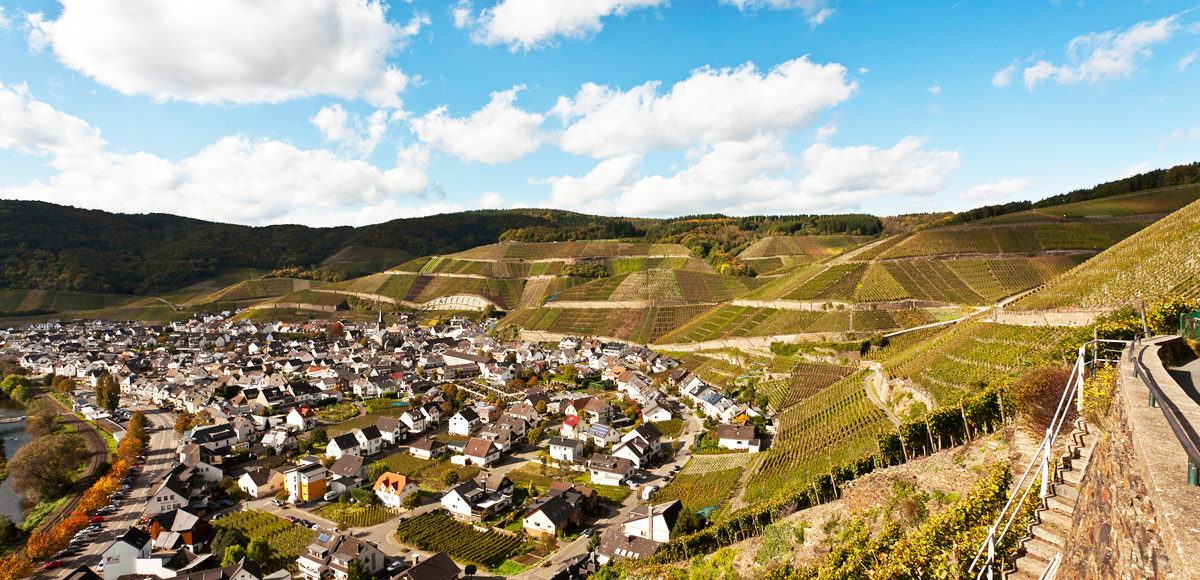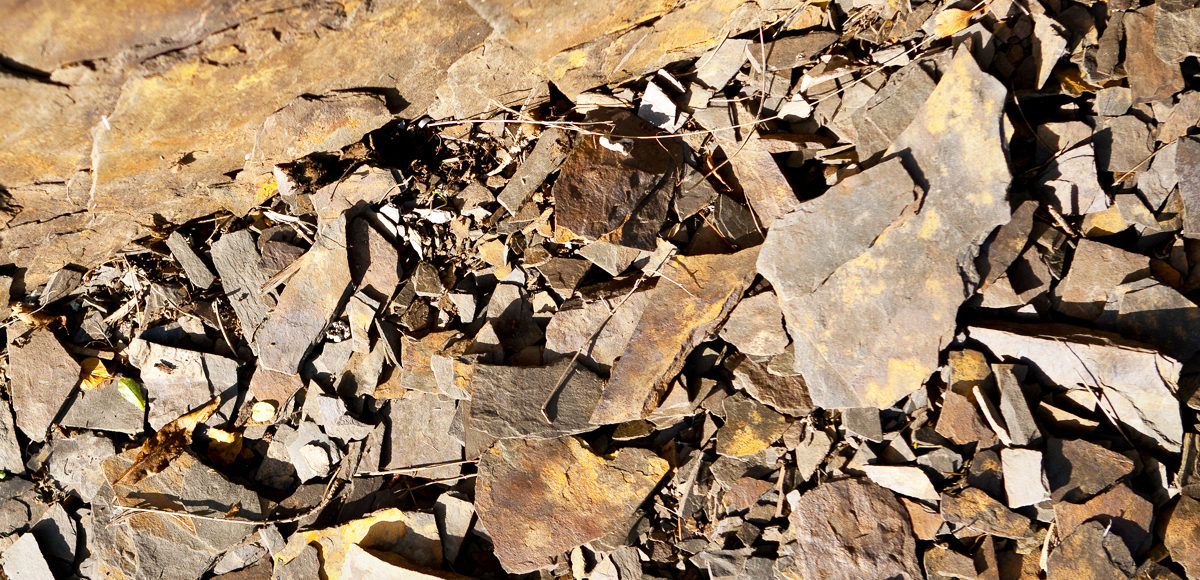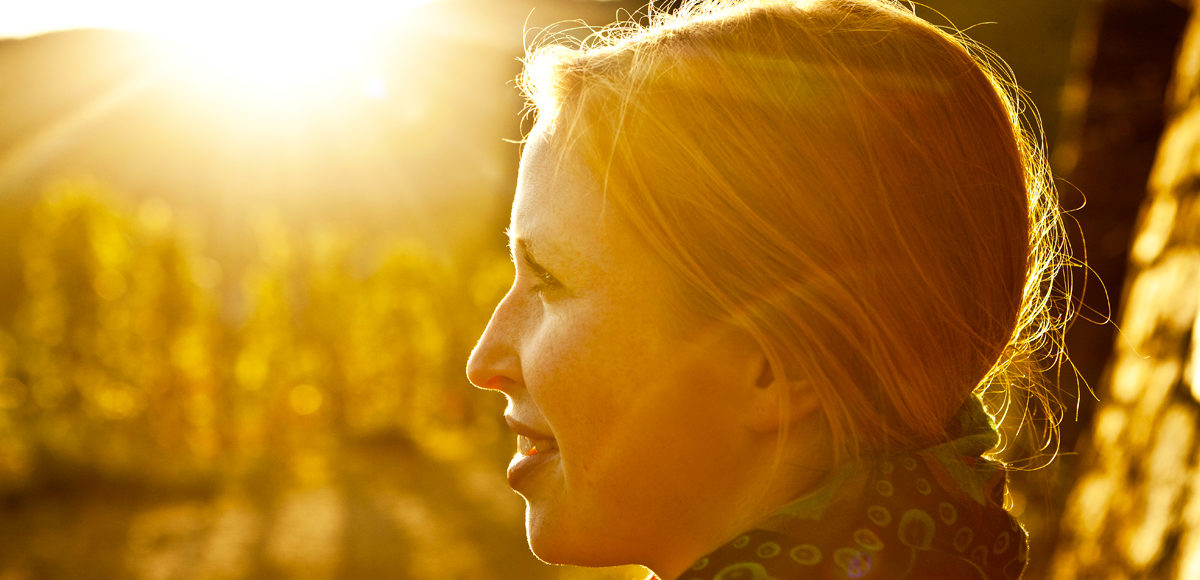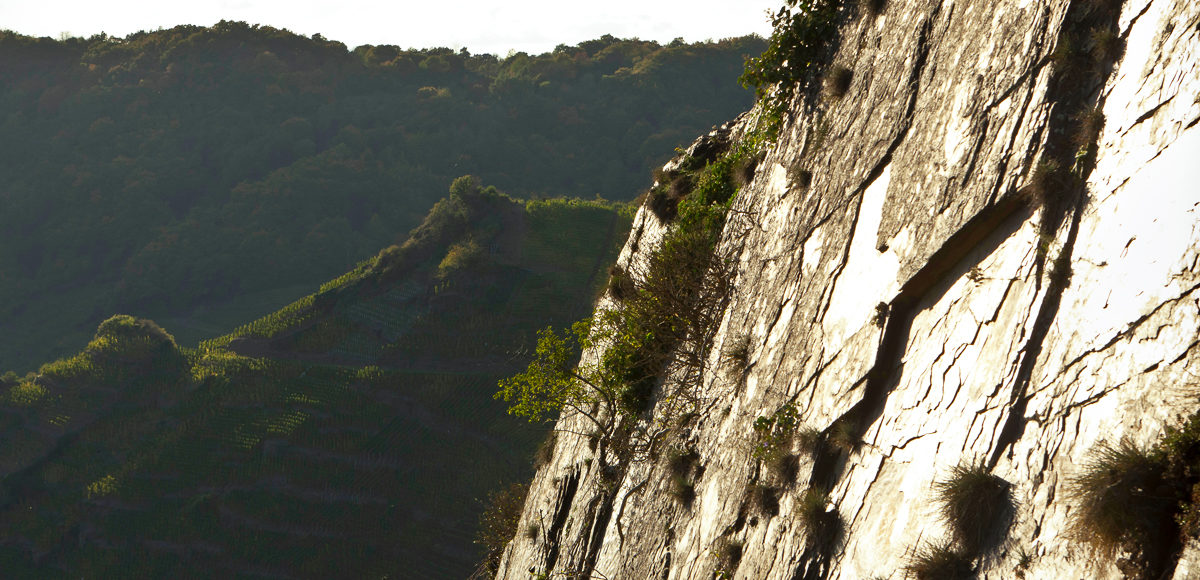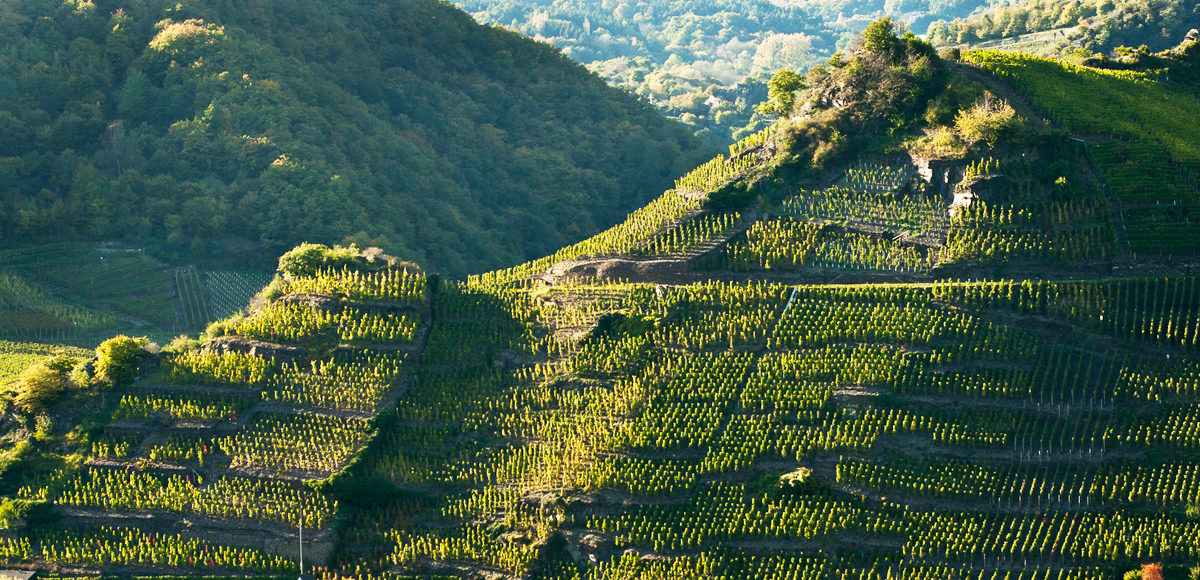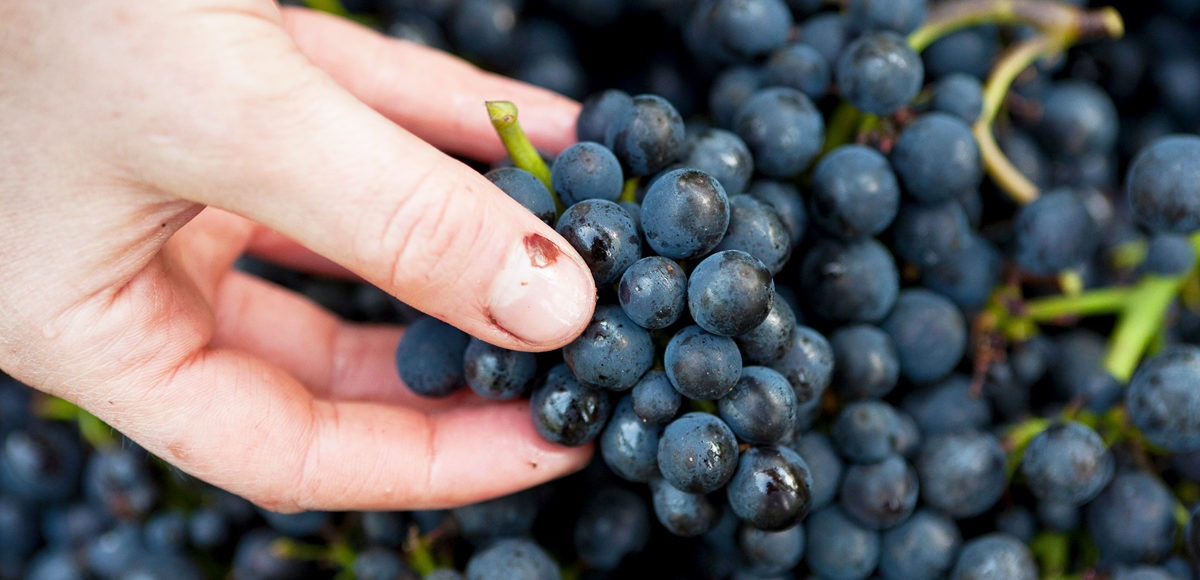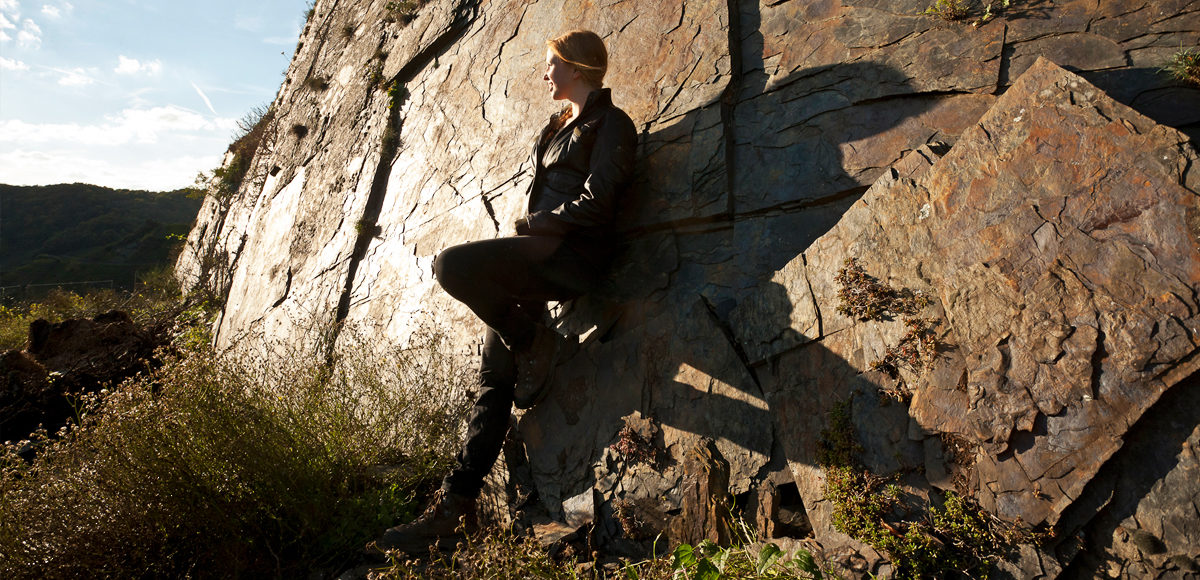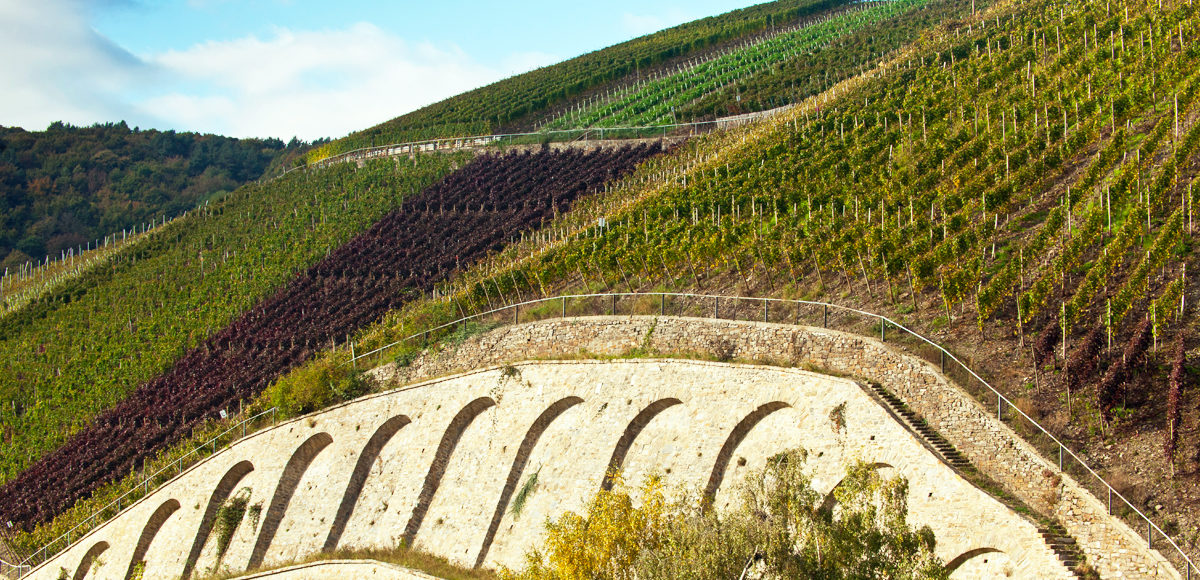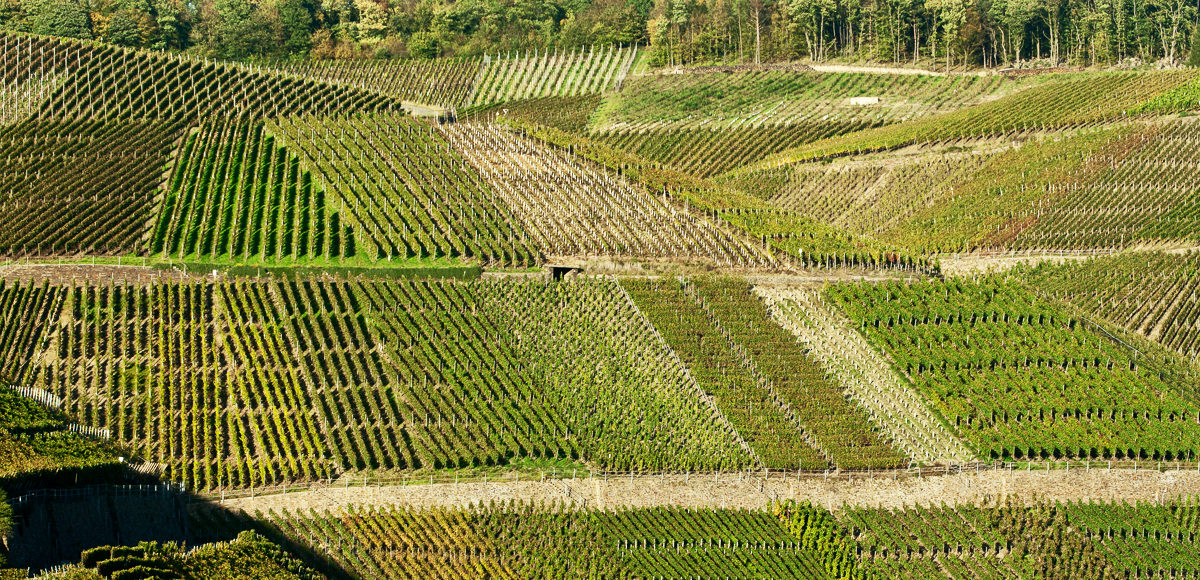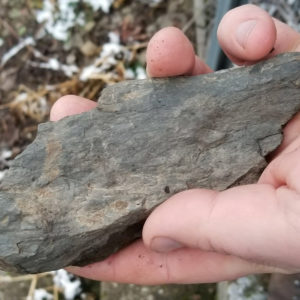“To grow up along the Ahr is to be infected early with the passion for Spätburgunder.” — Julia Bertram
“Nothing fascinates me like mature wines!,” exclaims Julia Bertram, herself vintage 1989. “The development, the changes, the complexity of aromas. This is why my wines are made for a long life. Old vines, low yields, carefully hand harvested (and not too late), with native yeasts and a long, gentle elevage in wood are important to me for this reason.” For more than a century, Julia’s family, most recently her mother and aunt, have grown and made wine in the tiny, marginal Ahr Valley. When Julia took over the estate in 2017, she directed her focus first toward the cherished old family sites, then on gradually stringing together an intricate necklace of what are now 11 sites along the River Ahr. She organically farms a total of 6.8 hectares of precipitous slopes, on soils mainly of greywacke, loess, loam, and slate, all planted to Spätburgunder (pinot noir, in German). Julia is fortunate to have a mix of rare old Ahr, Swiss, and French clones, including some planted by her grandfather. “What makes our wines unique,” Julia explains, “is the combination of slate and Spätburgunder in such a northerly region.” Single vineyard bottlings showcase Spätburgunder’s capacity for complex, long-lived statements of what this noble grape can achieve at upper latitudes. Across the board, Julia’s wines impress with their slender elegance, their arresting coolness and clarity, and above all a precisely mapped sense of place.
Region
The Ahr is one of Germany’s tiniest (560 hectares) and — critically — most northerly (50° N) wine regions, long held to be, as one writer would have it, “the winegrowing North Pole.” Yet the region offers vines an exceptionally warm, dry growing climate, with ample sunshine and little precipitation. “Even the Romans understood the special climatic conditions in the Ahr Valley: the little river flows west to east and so creates many south-facing steep slopes, the perfect exposition, protected from bad weather by the Eifel mountains,” Julia explains. The slopes, ranging between 100 and 260 meters [330 and 850 feet] above sea level, are predominantly of slate and greywacke. The dark soils readily absorb and reradiate heat, while the Ahr itself tempers the cold and circulates air to protect vines from spring frosts and deter botrytis — a major struggle in most steep vineyards, where vines are so difficult to access. Against this background, the Ahr’s relative obscurity comes as something of a surprise, particularly its derogation to the category of “lesser districts” in classic works on German wine. But relative obscurity only enhances the excitement of exploring such a singular corner of the wine world.
It is thought that red varieties came to the Ahr as early as the Middle Ages and that Pinot varieties came later still, some time after the Thirty Years War. Today, the Ahr is planted almost exclusively to red grapes (despite its tiny size, this is Germany’s largest contiguous red wine region), predominantly Spätburgunder as well as an earlier-ripening pinot strain called Frühburgunder. In the 19th century, political and economic instability, coupled with phylloxera, forced many Ahr Winzern to emigrate, and the area under vine was nearly halved between 1883 and 1925. The demands of heroic viticulture became insurmountable for many, until Flurbereinigung (vineyard reorganization) arrived in the 1950s, and with it the widespread planting of high-yielding pinot clones to shore up the Ahr’s flagging fortunes.
History
“The estate was founded in 1910 by my great-grandfather,” Julia relates. “At the time, the family farmed 2 hectares of vines, but even the previous generation had been engaged in wine growing as members of the local cooperative. My grandparents focused their work on the steep slopes of old vine Spätburgunder. In 2014, I decided to follow in the footsteps of my mother and aunt and become the fifth generation of our family to lead our little estate in the heart of the village of Dernau. In this way, I founded my ‘own company’ with just 1.3 hectares of vines that my parents made available to me. Each year, I’ve expanded a little so that we can have generational change of a different kind. In 2017, I took over the organization and leadership of the entire operation. Our team is mostly made up of family members: my aunt is in charge of direct sales, my parents are often out in the vineyards and my husband Benedikt supports me in the cellar,” Julia explains. Benedikt, it should be noted, is Benedikt Baltes, one of the most acclaimed Spätburgunder producers in Germany (also a Schatzi!). He, like Julia, grew up in the Ahr, but then followed his pinot passion east to Churfranken, where he took over the crumbling Weingut der Stadt Klingenberg, whose terraced slopes are home to legendary Spätburgunder terrain. Benedikt now splits his time between his estate and with Julia in Dernau — even more so since the recent birth of their son. Their combined experience and shared focus on a single variety exponentially increase the expertise of these young talents.
Winemaker
“Growing up in the family business,” notes Julia, “I was often in the vineyards and cellar, always with my finger on the pulse of the estate. But the real passion for wine and viticulture came with my first glass, when I was about 15.” Inspired, she interned at Dernau’s iconic Meyer-Näkel, pioneers of the great dry Spätburgunder largely responsible for elevating the Ahr’s profile over the past decade or so. Julia went on to study viticulture and oenology at Geisenheim, graduating in 2012. The following year, Julia was named German Wine Queen, an honor reserved for charismatic, intelligent women who typically come from winemaking backgrounds and are on track for a future in wine themselves. Wearing this crown, Julia spent a year representing German wines around the world. “That was when I first realized a wish to lead the family business into the next generation.” In 2014, Julia returned home and started to make a small amount of wine under her own name. Around the same time, she started helping Benedikt to establish his estate in Klingenberg, Churfranken — more than 200 kilometers away — while simultaneously building up her own. “The Ahr is where my roots and the foundation of my estate lie. Thanks to my parents, I have the opportunity to live out my fascination with Spätburgunder from the old vines in the best sites here. Working in and with nature, the different challenges in each year, and the versatility make the job unique for me. For us, it’s all about Spätburgunder, not just professionally, but personally as well. We also enjoy trying wines from around the world. Our second passion is riesling and since we have good friends in the Mosel, we are always well cared for in that department,” Julia adds.
Vineyards and farming
Julia has holdings in some of the Ahr’s most privileged vineyards. Among the Ahrweiler sites, the Rosenthal is regarded as a grand cru, with a south-/southwest exposition and grade of up to 45%. Soils are mostly of greywacke (a course, dense sandstone), with high proportions of clay, quartz, and feldspar, dating to at least 250 million years ago. The neighboring Forstberg is more southwesterly facing, nearly as steep, with soils that are a mix of sandstone and loess with a proportion of greywacke. Around Dernau, there is a greater concentration of Devonian slate, which comes to the fore in sites like the Schieferlay (Schiefer = slate, Lay = cliff) and the Goldkaul, the latter tucked into a small, very narrow side valley with a full southern exposure, extremely steep terraces, and soils of an exceptionally fine conglomerate of slate and greywacke — all untouched by Flurbereinigung.
“Our vineyards are planted exclusively to Spätburgunder. We have a very wide variety of old German clones as well as Swiss and French clonal material and vines from massal selection. The vines are almost entirely Guyot, with a small portion in single-stake training, as well as a trial with gobelet.” Julia’s intensive focus on one variety across a range of micro terroirs gives her an exceptional understanding of Spätburgunder’s proclivities and expressions in the Ahr. “Due to the steep slopes, this is mostly accomplished through hand work and thus a very close connection to the vines,” she recognizes.
Relative to her parents’ and grandparents’ approaches, Julia says “today we place a bit more emphasis on preserving the old vine parcels, consistent yield reduction, an even earlier harvest to retain more freshness and acidity in the wines, planting cover crops throughout the vineyards and, with that, sustaining great biodiversity as well as conversion to organic viticulture. In recent years, we opted against sowing cover crop seed mixtures, in order to give the natural growth the possibility to establish itself. Of course, we try to adjust our work to climatic conditions. It quickly becomes clear that there is no patented formula, that every vintage is different. To respond to the somewhat warmer vintages, we undertake less deleafing, or when we do, only on the shaded side, and are making trials with truncated canopies to delay ripening. In the past years, we have worked very closely along organic lines. But in 2019 we decided to convert all our vineyards systematically to organic viticulture.”
In the cellar
“For me,” says Julia, “90% of the quality is grown out on the steep slopes and our task in the cellar is to help express the elegance and complexity of the vines in the best way. By working very gently and without any additions (chemical or otherwise) we give our wines the opportunity to develop themselves. In the cellar, we work to capture and convey the quality we achieve in the vineyard with as much purity and authenticity as possible.”
As a rule, all of the wines are made in the same way: cold soak for three to four days, followed by spontaneous fermentation in open wood or stainless steel tanks, in contact with the skins for approximately 10 days (depending on the vintage), very gentle pressing, and with the wine then moved by gravity into cask, where it typically spends a minimum of 12 months. For the Handwerk bottling, the wines generally see six additional months in stainless on the fine lees. The Ahrweiler and Dernauer Spätburgunder see 75% neutral wood (300L and 500L casks) and 25% first- and second-use casks. Julia is very particular about her casks. She sources them from wood grown in the forests of Churfranken and made by coopers she knows personally, favoring a selection of ages and sizes. “The wood cask is always the means to an end, never a transmitter of flavor,” Julia makes clear. “Pinot from slate is unforgiving of the incorrect use of wood.”
“The various soils of the Ahr Valley, above all the slates in all their forms, determine the particular style of my wines,” notes Julia. “My pinots often have very fine, almost floral aromas and show an elegant minerality and a cool, elegantly juicy acid bite, which leads to very sensual and long-lived wines.” Julia’s philosophy is: “the closer the origins, the higher the quality. This is why we have categorized our sites into Erste (premier) and Große Lagen (grand cru) sites, although we are not part of any association or controlled system.”
